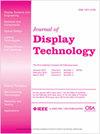Understanding Experiential Qualities of Light-Touch-Matters: Towards a Tool Kit
Q Engineering
引用次数: 2
Abstract
The present paper is about the tools and strategies, designers adopt and develop to support their understanding of an underdeveloped smart material composite. Referred to as Light-Touch-Matters or in short, the LTM materials, the composition is proposed by materials scientists, integrating the two smart materials of flexible thin-film Organic Light-Emitting Diodes and piezo-electric polymers. In a project funded by European-Union, materials scientists and designers joined forces to further develop such smart material composites through early design input. In order to introduce and represent the LTM materials to designer’s prior their actual development, materials scientists mainly used abstract descriptions, ‘key’ physical properties and sensing/actuating function. Such representations, however, hardly capture the experiential qualities of LTM materials, which concern how they gratify our senses and what meanings, emotions and actions they elicit. This paper has conducted four design case studies to identify the design approaches and representational tools used and developed by designers for understanding, exploration and communication of the experiential qualities of these underdeveloped smart materials. Discussing the limitations of the identified tools in terms of capturing the dynamic and performative qualities, the paper draws further implications towards a future design Tool Kit.理解轻触事物的经验品质:迈向工具包
本论文是关于工具和策略,设计师采用和发展,以支持他们的理解不发达的智能材料复合材料。这种材料被称为Light-Touch-Matters或简称LTM材料,是由材料科学家提出的,将柔性薄膜有机发光二极管和压电聚合物这两种智能材料结合在一起。在一个由欧盟资助的项目中,材料科学家和设计师联手,通过早期设计输入进一步开发这种智能材料复合材料。为了在LTM材料实际开发之前向设计者介绍和展示材料,材料科学家主要使用抽象描述、“关键”物理特性和传感/驱动功能。然而,这样的表述很难捕捉到LTM材料的体验品质,即它们如何满足我们的感官,以及它们引发的意义、情感和行为。本文进行了四个设计案例研究,以确定设计师使用和开发的设计方法和代表性工具,以理解、探索和交流这些不发达的智能材料的体验品质。本文讨论了已确定的工具在捕获动态和性能质量方面的局限性,并对未来的设计工具包提出了进一步的暗示。
本文章由计算机程序翻译,如有差异,请以英文原文为准。
求助全文
约1分钟内获得全文
求助全文
来源期刊

Journal of Display Technology
工程技术-工程:电子与电气
CiteScore
1.50
自引率
0.00%
发文量
0
审稿时长
2.8 months
期刊介绍:
This publication covers the theory, material, design, fabrication, manufacturing and application of information displays and aspects of display technology that emphasize the progress in device engineering, design and simulation, materials, electronics, physics, and reliability aspects of displays and the application of displays. The Journal is sponsored by EDS, seven other IEEE societies (BT, CES, CPMT, IA, IM, PHO and SSC) and the Optical Society of America (OSA).
 求助内容:
求助内容: 应助结果提醒方式:
应助结果提醒方式:


